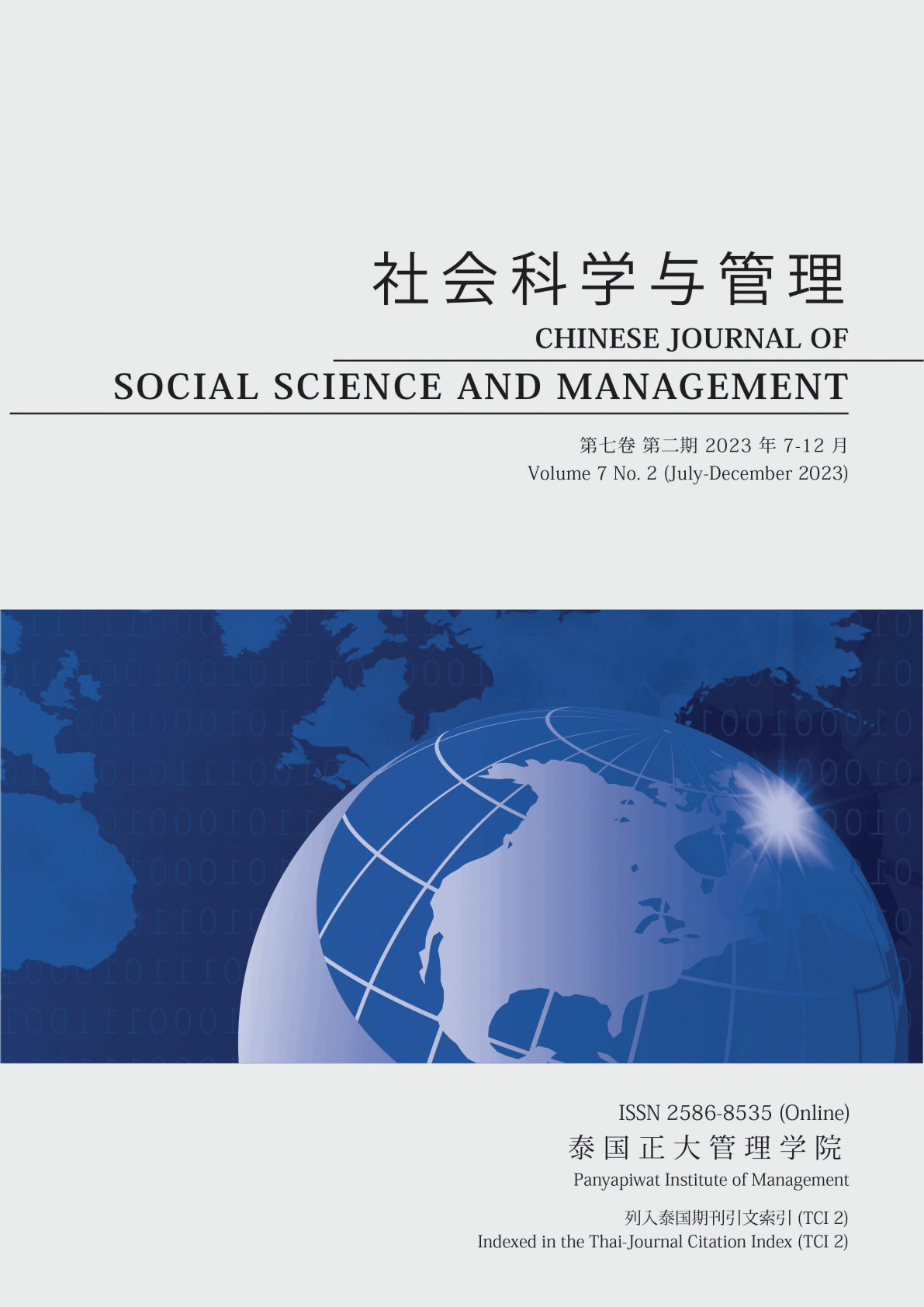PHONETIC CHANGE OF PALI LOANWORDS IN DAI AND THAI LANGUAGES
Main Article Content
Abstract
Both the Dai and Thai languages belong to the Zhuang-Dong language branch of the Chinese-Tibetan language family. The phonetics, vocabulary and grammar of these two languages are very similar. Most of the loanwords in Dai and Thai come from Pali, and these Pali loanwords have an important role in both of these languages. In order to adapt the phonetic rules of their own language, the Dai and Thai people have adopted various ways to transcribe the loanwords of Pali, and therefore, phonetic changes to the loanwords of Pali have occurred. The research objective of this paper is to examine the phonological similarities, differences and changes of Pali loanwords in the Xishuangbanna Dai and Thai languages. Moreover, this paper also explores the influence of Pali loanwords on the Dai and Thai languages.
Article Details

This work is licensed under a Creative Commons Attribution-NonCommercial-NoDerivatives 4.0 International License.
Chinese Journal of Social Science and Management Editorial Division
The Office of Research and Development, Panyapiwat Institute of Management
85/1 Moo 2, Chaengwattana Rd., Bang Talat, Pakkred, Nonthaburi 11120, Thailand
Tel. 02 855 01048 E-mail: cjssm@pim.ac.th
References
Bao, M. S. (2005a). Influence of Hinayana in Dai language of Sipsong Panna. Journal Hubei Institute for Nationalities, 23(1), 54-56. [in Chinese]
Bao, M. S. (2005b). The influence of Pali loanwords on the Dai language in Xishuangbanna [Doctoral dissertation]. Minzu University of China. [in Chinese]
Bao, M. S. (2012). The influence of Pali loanwords on the Dai’s words in Xishuangbanna. Journal of Baise University, 25(1), 31-34. [in Chinese]
Buaphanngam, S. (2016). Vowel changes in Pali and Sanskrit loanwords in Thai. Damrong Journal, 27(55), 147-174. [in Thai]
Chaimano, B. (2005). Why does “t” pronounced as “d” and “p” as “b” in Thai words borrowed from Pali and Sanskrit? Manutsayasat Wichaskan Journal, (13), 21-29. [in Thai]
Chaipunya, S. Ch. (2019). Orthography: Influences of Pali and Sanskrit on Thai. Journal of Humanities and Social Sciences Burapha University, 16(1), 276-293. [in Thai]
Dai, H. L. (2010). A preliminary study on the basic rules of Dai to Pali transcription. In Chinese National Ancient Writing Research Association . The 1st International Colloquium on Ancient Manuscripts and Literature of Minorities in China (pp. 595-605). The Ethnic Publishing House. https://navi. cnki.net/knavi/conferences/018327/proceedings/MGWZ201010001/detail [in Chinese]
Dai, H. L. (2018). An analysis on variations of rhyme /ɔn/ in the transcription of the Pali in the Dai language. Minority Languages of China, (4), 37-41. [in Chinese]
Dai, H. L., & Yu, L. (2022). An analysis on phonetic variations in the transcription of the Pali short vowel /a/ with the letter indicating /u/ in the Dai script. Minority Languages of China, (4), 115-121. [in Chinese]
Dao, S. X. (1982). The Influence of Pali loanwords on the Dai language. Minority Languages of China, (6), 1-16. [in Chinese]
Liu, Y. (1993). Hinayana Buddhism and Dai culture. The nationalities publishing house of Yunnan. [in Chinese]
Ming, X. (2016). A comparative study on phonetics of Dai and Thai languages. Modern Communication, (23), 112. [in Chinese]
Panthumetha, B. (1946). Pali and Sanskrit related to Thai language [Master’s thesis]. Chulalongkorn University. [in Thai]
Suratecho, T. H. (2016). Thai-Pali dictionary. Panyamit Press. [in Thai]
Yan, W. H. (2022). On loanwords from Pali in the “White Crow” part of the pattra-leaf scriptures. Minority Translators Journal, (1), 85-92. [in Chinese]
Yan, X. (2014). Dai-Chinese dictionary. The nationalities publishing house of Yunnan. [in Chinese]
Yang, G. Y. (2007). Shisan Shiji DaiTai Yuyan De Yuyinxitong Yanjiu. Minorities Press. [in Chinese]
Yao, Y. (2016). A comparative study of Pali language on Vessantara-Jataka in Xishuangbanna Dai minority. Journal of South-west Ancient Books, (1), 8-19. [in Chinese]
Zhang, G. J. (2003). Pali loanwords in Buddhist Sutra Vessantara-Jataka in Dai script: The first part Dasa Vara. Minority Languages of China, (4), 1-7. [in Chinese]


